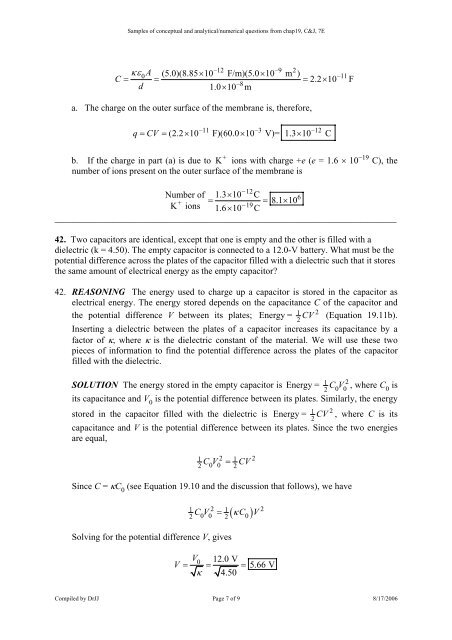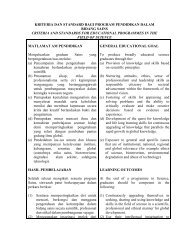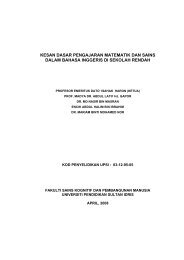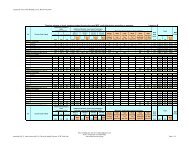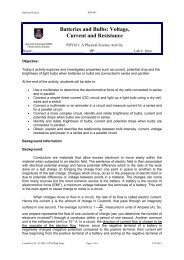Basic Physics II Evidences - DrJJ - UiTM
Basic Physics II Evidences - DrJJ - UiTM
Basic Physics II Evidences - DrJJ - UiTM
You also want an ePaper? Increase the reach of your titles
YUMPU automatically turns print PDFs into web optimized ePapers that Google loves.
Samples of conceptual and analytical/numerical questions from chap19, C&J, 7E–12 –9 2κε0A(5.0)(8.85× 10 F/m)(5.0×10 m )–11C = = = 2.2×10 Fd–81.0×10 ma. The charge on the outer surface of the membrane is, therefore,–11 –3 –12q = CV = (2.2× 10 F)(60.0× 10 V)= 1.3×10 C+b. If the charge in part (a) is due to K ions with charge +e (e = 1.6 × 10 −19 C), thenumber of ions present on the outer surface of the membrane isNumber of 1.3×10 C6+ = = 8.1×10K ions −191.6×10 C___________________________________________________________________________42. Two capacitors are identical, except that one is empty and the other is filled with adielectric (k = 4.50). The empty capacitor is connected to a 12.0-V battery. What must be thepotential difference across the plates of the capacitor filled with a dielectric such that it storesthe same amount of electrical energy as the empty capacitor?42. REASONING The energy used to charge up a capacitor is stored in the capacitor aselectrical energy. The energy stored depends on the capacitance C of the capacitor and2the potential difference V between its plates; Energy = CV (Equation 19.11b).Inserting a dielectric between the plates of a capacitor increases its capacitance by afactor of κ, where κ is the dielectric constant of the material. We will use these twopieces of information to find the potential difference across the plates of the capacitorfilled with the dielectric.SOLUTION The energy stored in the empty capacitor is Energy = CV2 0 0, where C 0isits capacitance and V 0is the potential difference between its plates. Similarly, the energy2stored in the capacitor filled with the dielectric is Energy = CV , where C is itscapacitance and V is the potential difference between its plates. Since the two energiesare equal,−121 2 1 2CV2 0 0= CV2Since C = κC 0(see Equation 19.10 and the discussion that follows), we have( κ )1 2 1 22 CV 0 0=2C 0VSolving for the potential difference V, givesV0 12.0 VV = = = 5.66 Vκ 4.50121212Compiled by <strong>DrJJ</strong> Page 7 of 9 8/17/2006


